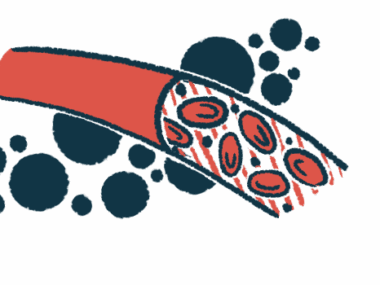What I’ve learned from trying (and failing) with several AS medications
How I experienced shifts in side effects while experimenting with biologics
Written by |

Note: This column describes the author’s own experiences with an il-17 inhibitor. Not everyone will have the same response to treatment. Consult your doctor before starting or stopping a therapy.
When my rheumatologist first told me we were going to try a biologic medication to treat my ankylosing spondylitis (AS), I felt mixed emotions. On one hand, I was nervous, especially because I had to inject the medicine myself. I’d been fearful of needles my entire life and always made sure to keep my eyes fixed on the wall when a nurse gave me a routine shot at the doctor’s office.
Now I’d not only have to look at the needle, but I’d also have to plunge that thing into my thigh or stomach once every week!
I was also fearful of how my body would respond to the drug. While biologics are major gains in treating autoimmune diseases such as AS because they modify the immune system, many come with a black box warning of a heightened risk of infection. It doesn’t help when a TV commercial for said medication includes a list of side effects — some minor, some serious — spewed out at the end of a catchy tune.
But I also felt hopeful. There was a decent chance that my medication might put me on a path to feeling better.
Failure is a very real option
A few weeks later I developed hives across my arms, legs, and back. Even with antihistamines, I had trouble sleeping; I’d toss and turn with itchiness all night. I informed my doctor, who switched me to a different drug, hoping this one would be less likely to cause an allergic reaction.
Two months after trying the new biologic, my lower back and hips were killing me as they never had before. While teaching, I limped around the classroom in pain. A spot on the underside of my foot hurt so badly I found it difficult to focus on anything else.
Since starting biologics, things seemed to be getting worse. I didn’t understand. Why wasn’t my body responding well? Why did they work for others and not for me? Colleagues, family members, and friends were counting on me to get better. What did it mean if it wasn’t?
I thought that taking the biologic meant I’d get back my healthier self. I quickly learned that wasn’t always the case.
The waiting game
Across the next several months, I was put on a carousel of pills, injections, and infusions. Some worked better than others. Many had side effects — some manageable, some not.
In May of last year, I was put on an il-17 inhibitor, a newer form of biologic that blocks il-17, a type of inflammatory protein. My doctors encouraged me to give this drug a solid six months. That felt like an extremely long time, especially when I was still having flares.
Sure enough, six months later, my feet and hands stopped hurting. I could do the butterfly stretch without my sacroiliac joint flaring. My heating pad sat on the shelf, dusty from weeks of going untouched. I even started running again. After three years of searching for the best treatment plan, I thought I’d finally arrived at my answer.
Medications and the unknown
This past November, I got a bad fungal infection and was advised to pause my il-17 inhibitor. Days passed without my injection, and the creaks in my ankles, quads, and lower spine quickly came back. As the familiar aches and pains returned, I could clearly see how much that medication had been helping.
I’d hoped that when I took my next injection, things would go back to where I’d left off. Unfortunately, the il-17 inhibitor has yet to return to its previous level of performance. While I’m still feeling better than I was on other medications, I’m not sure if that indicates it might be time to try something new.
Through all of this, I’ve learned that treating ankylosing spondylitis is a constant, exhausting process of decision making as we grapple with many concerns at once: Is taking a medication worth the risks? Can I manage the side effects? Is the medication working? Is it working enough? With ankylosing spondylitis, the answers to these questions often change.
When I’m feeling unsure about my path forward, I try to focus on what I can control. I can discuss my concerns with my doctor. I can use ice and heating pads when I’m in pain. I can swim when I feel up for it.
For now, I’ll continue to take my monthly dose of il-17 inhibitor (that I’m now a pro at injecting) as I take things one day at a time.
Note: Ankylosing Spondylitis News is strictly a news and information website about the disease. It does not provide medical advice, diagnosis, or treatment. This content is not intended to be a substitute for professional medical advice, diagnosis, or treatment. Always seek the advice of your physician or other qualified health provider with any questions you may have regarding a medical condition. Never disregard professional medical advice or delay in seeking it because of something you have read on this website. The opinions expressed in this column are not those of Ankylosing Spondylitis News or its parent company, Bionews, and are intended to spark discussion about issues pertaining to ankylosing spondylitis.







susan
Thanks for sharing. it certainly is a trial and error process. I declined the biologics and have never looked back. A low starch diet has helped because I have HLAB27 gene (and gut can cause systemic inflammation) and I also increase my anti-oxidant, again to help support the gene in its function in fighting off infections without attacking self. I hope you continue to improve as you search for solutions. It's great being painfree and certainly worth the trial and error, even quacky things like cutting starch foods from diet and sipping green tea! Good luck
Virginia Raymond
You are brave and smart and observant, Alex. And so generous. In sharing your insights, you provide an important public service, possibly even a lifeline. Many people, living with a variety of illnesses or conditions, experience similar journeys of hope, failure, success, setbacks, side effects, and the constant need to weigh possible risks and possible failures among too many unknowns. It is hard, but reading your words can help. Thank you so much.
Sheldon Lanski
Your story is so familiar. The struggle with AS is real! I agree with Susan - a starch-free diet has helped me more significantly than any medication - it's definitely worth exploring!